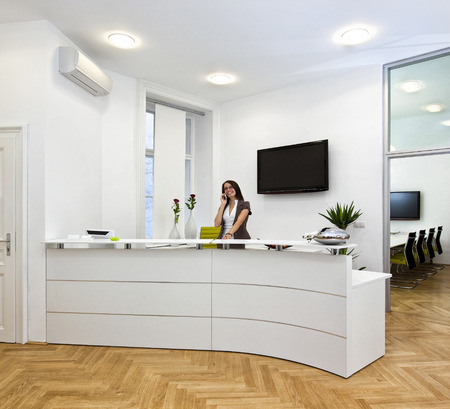Business Casual vs.
Professional Dress

The 21st century work world has brought about unique "professional" looks to many businesses and organizations. Though this look is considered a little too casual for the traditional standards in law, finance and other professional services, it still gets the job done.
Business casual, as the look is known, threw a wrench in some work environments. But questions remain the same: Is it professional enough? Will you be taken seriously? Can it be worn in executive suites?
In the period of pandemic, when virtual conferencing is by necessity in vogue, the same questions apply. With less of you being viewed, what you choose to wear is vital in making a first impression.
Dressing Down in a Professional Environment
At a not-too-long-ago in-person professional conference, I attended as the guest of a speaker.
What expectations did I hold for myself?
- Avoid crashing the scene by wearing shorts and flip-flops - even though the event is at a beach resort.
- Wear something comfortable, that I like, and dressed down to a business casual level indicating that I am off-duty, but am welcomed as a sit-in participant.
This is an example of when blending in is called for, but because I was not fully participating, I would not be required to dress at the level of those who are.
Respect for the participants, the occasion, or the profession, asks that you dress tastefully. Nothing too-short, too tight, too low cut or too flashy will keep you from being a distraction to the real reasons you are there. Men, keep the shirt buttoned appropriately for the occasion.
Category lines between professional and casual blur easily. But tasteful is always in style. Mark your own setting by creating default outfits that keep you appropriate in any setting.
Business Casual Basics
When choosing your default outfit components, keep in mind that they should fit well, be comfortable, and give you confidence.
A woman's business casual wardrobe may include:
- Slacks or dressy pants
- Tailored skirts that reach the top of the knees
- Long- or medium-sleeved solid or soft-print blouses that aren’t too revealing (tucked in or not)
- Sweaters or light jackets
- Dress shoes or low boots (closed-toe shoes are always a good choice)
- Modest accessories, including scarves
A man's business casual wardrobe may include:
- Slacks, khakis
- Collared shirts, or polo-style shirts, sweaters
- Optional tie
- Dressy shoes
During and post-pandemic, for virtual and video business meetings, I advise full torso dressing. You may unexpectedly need to stand up and pajama bottoms might be shocking to others present at these meetings.
Business Professional Attire
Building on your business casual wardrobe above, you can add elements to create a professional wardrobe.
For women, this may include:
- Skirt or pant suits in black, gray, and blue
- A blazer or jacket with coordinated skirts/pants
- Shirts and blouses to be tucked in
- Classic dresses with jackets
- Minimal jewelry
- Hosiery
- Close-toed shoes
- Quality leather bag
For men, this may include:
- Suits in black, gray, and blue
- Suit pants with jacket or blazer
- Button-down or firm-collared dress shirt
- Tie
- Dress shoes
For a terrific summary of the information above, this infographic is a helpful reference!
Coming to Terms with Casual
As casual seeps into the working world, remember that making a positive impression can be affected by the unintended consequences of less-than-thought-through self-presentation.
Sandals, short pants, swing skirts, and sleeveless or revealing tops send different messages when you are at play or at work. Jeans also belong in the casual section of your wardrobe.
Sure, there are some items that will fit into both the work and play categories, but choose these wisely. For many people, it's helpful to compartmentalize your wardrobe items to prevent casual from creeping in too far.
If you’re thinking about ratcheting up your image in your own eyes, here are some suggestions:
- Separate your clothes into defined sections of work and play.
- Have a throw-away fest and let things go! (My guess is that you really won’t miss them.)
- Think “outside the peer” box and imagine yourself setting a new standard.
Wardrobe etiquette will help you feel more comfortable and confident. And feeling better about yourself is always a goal!
Whether business casual or professional, when you're confident, "put together", and can exude a level of comfort with yourself, people like and trust you more - two characteristics everyone needs when building business relationships!














